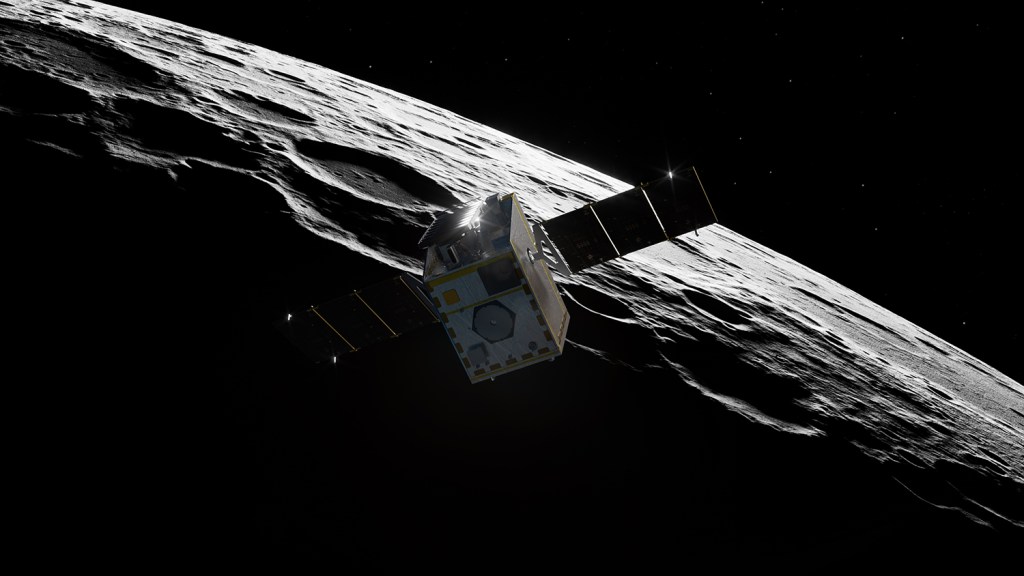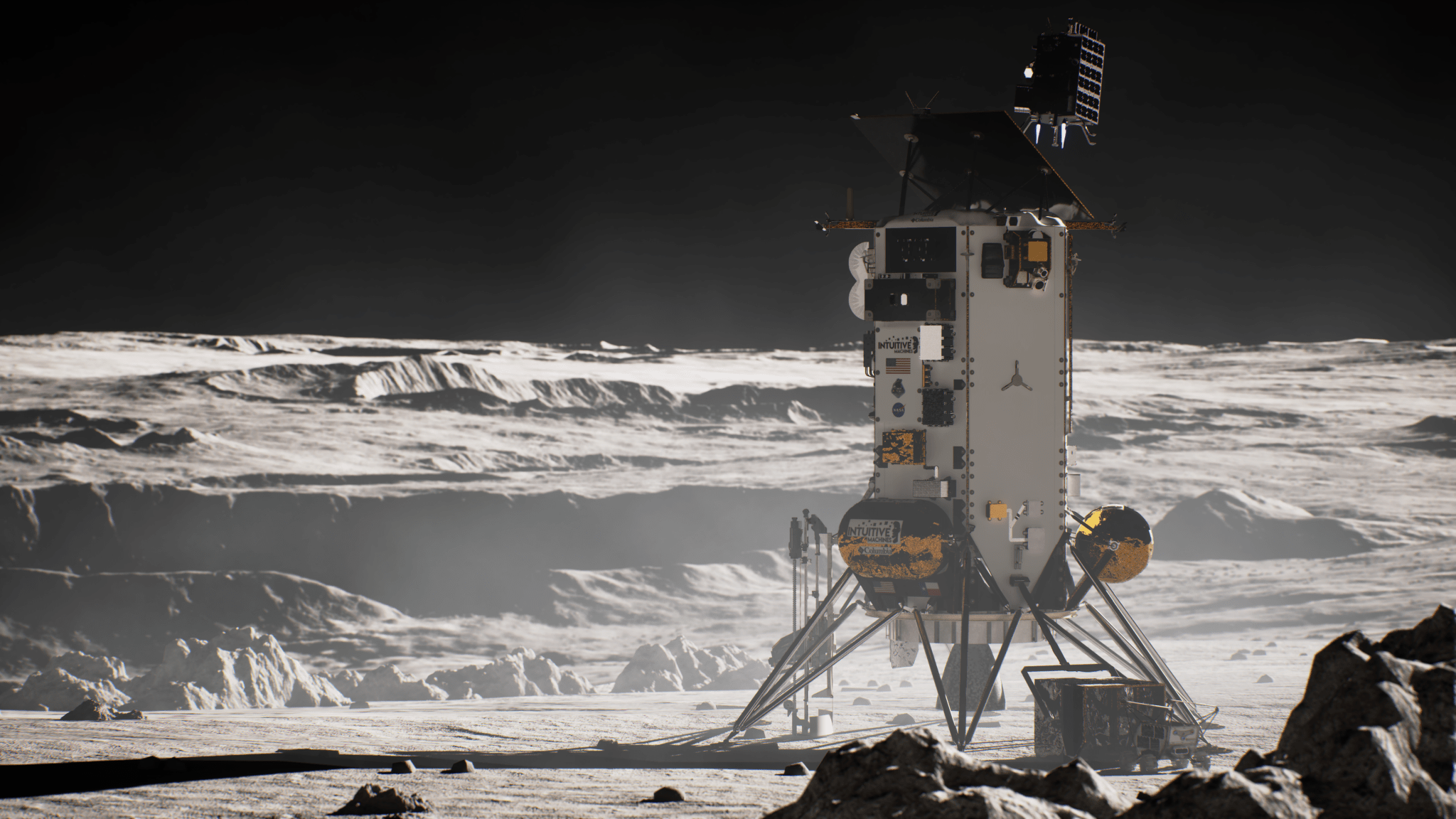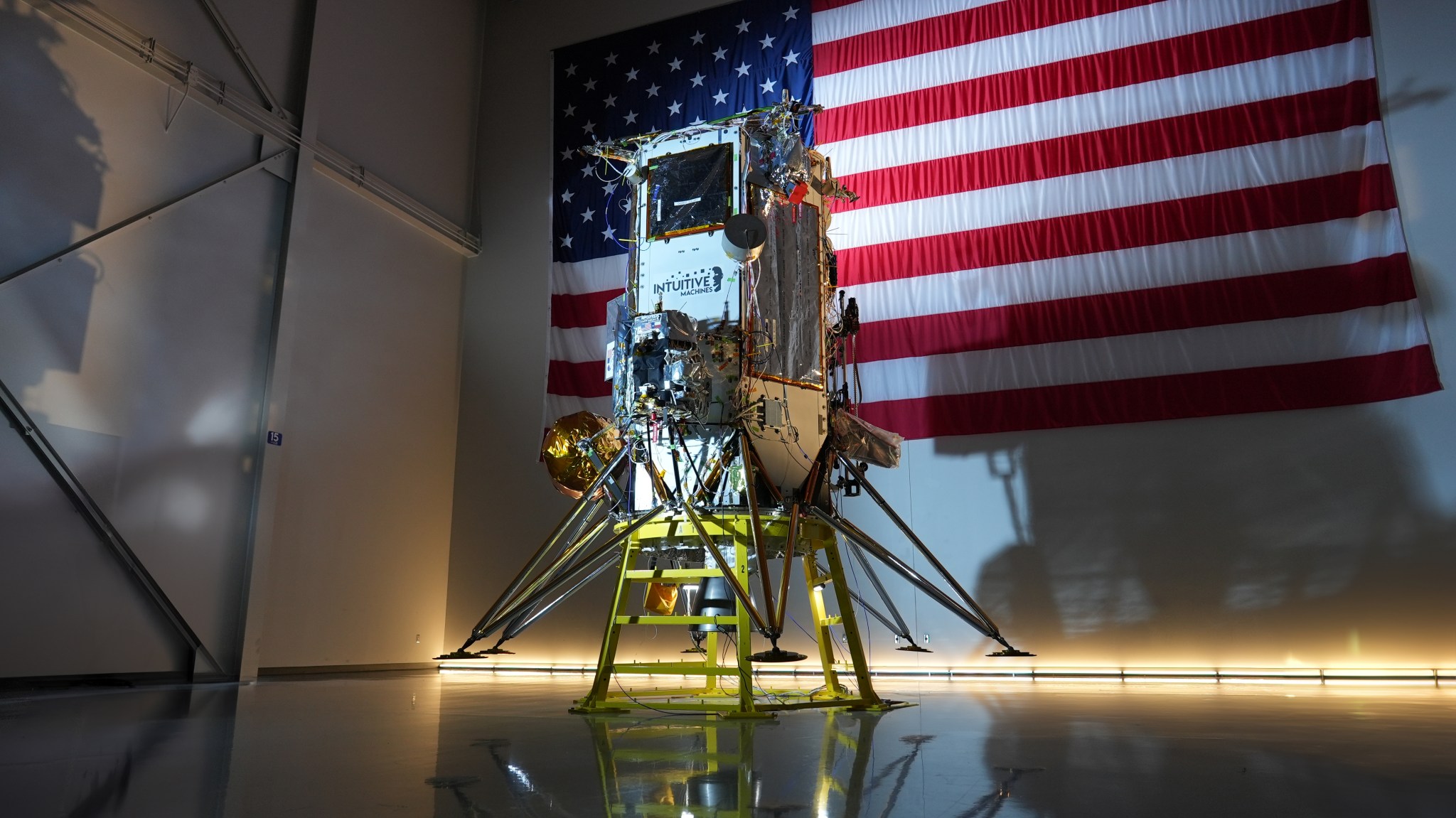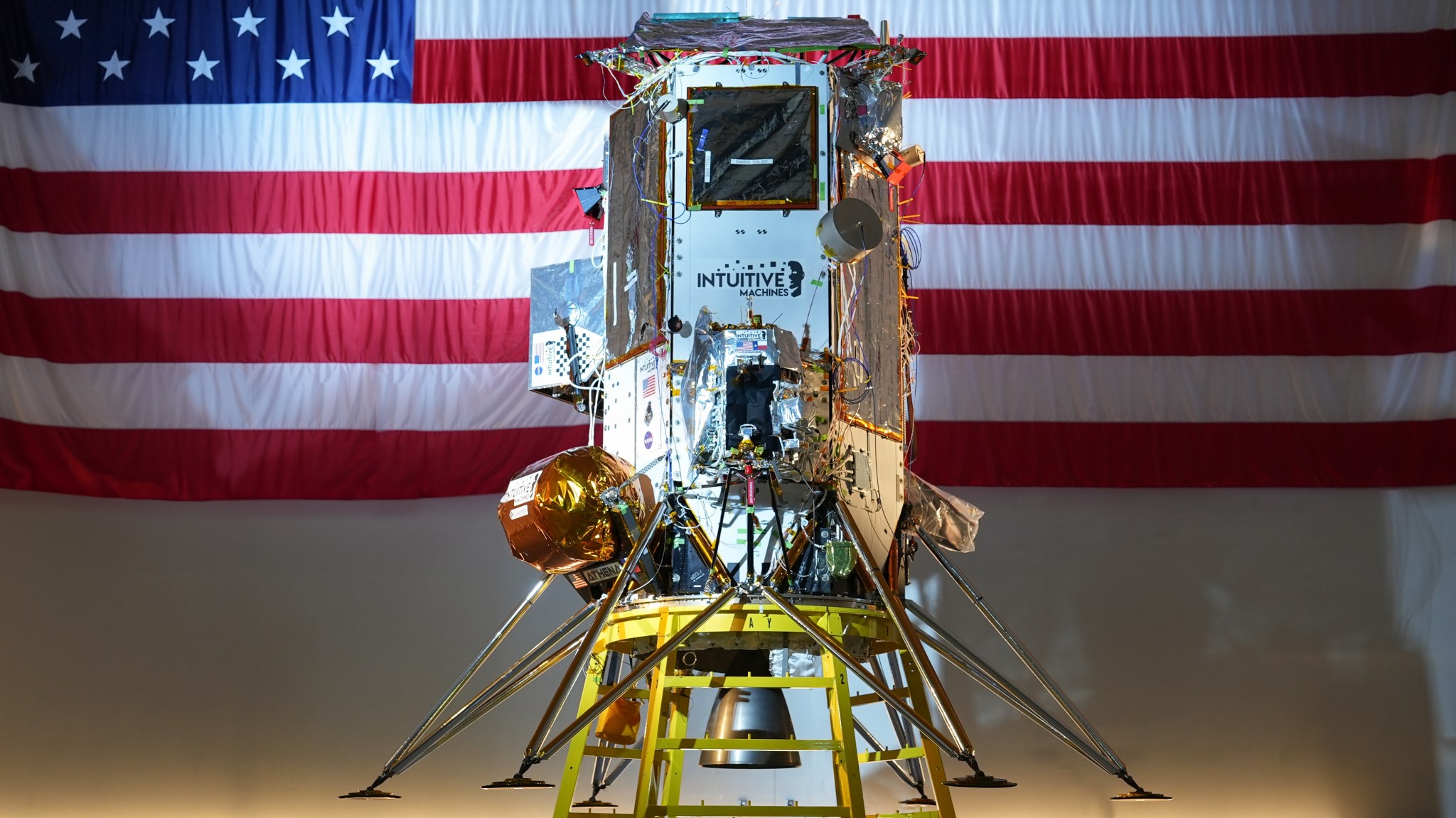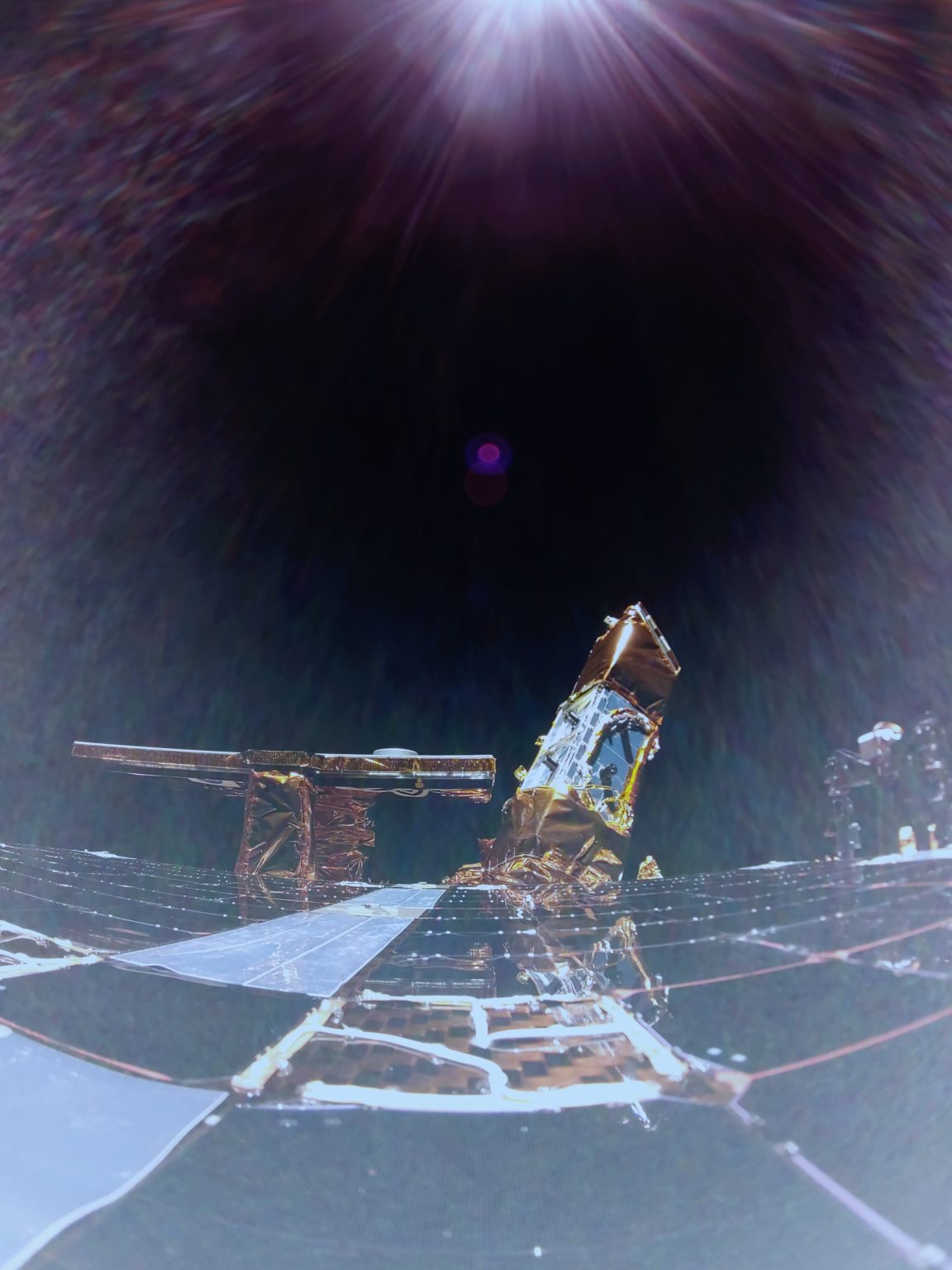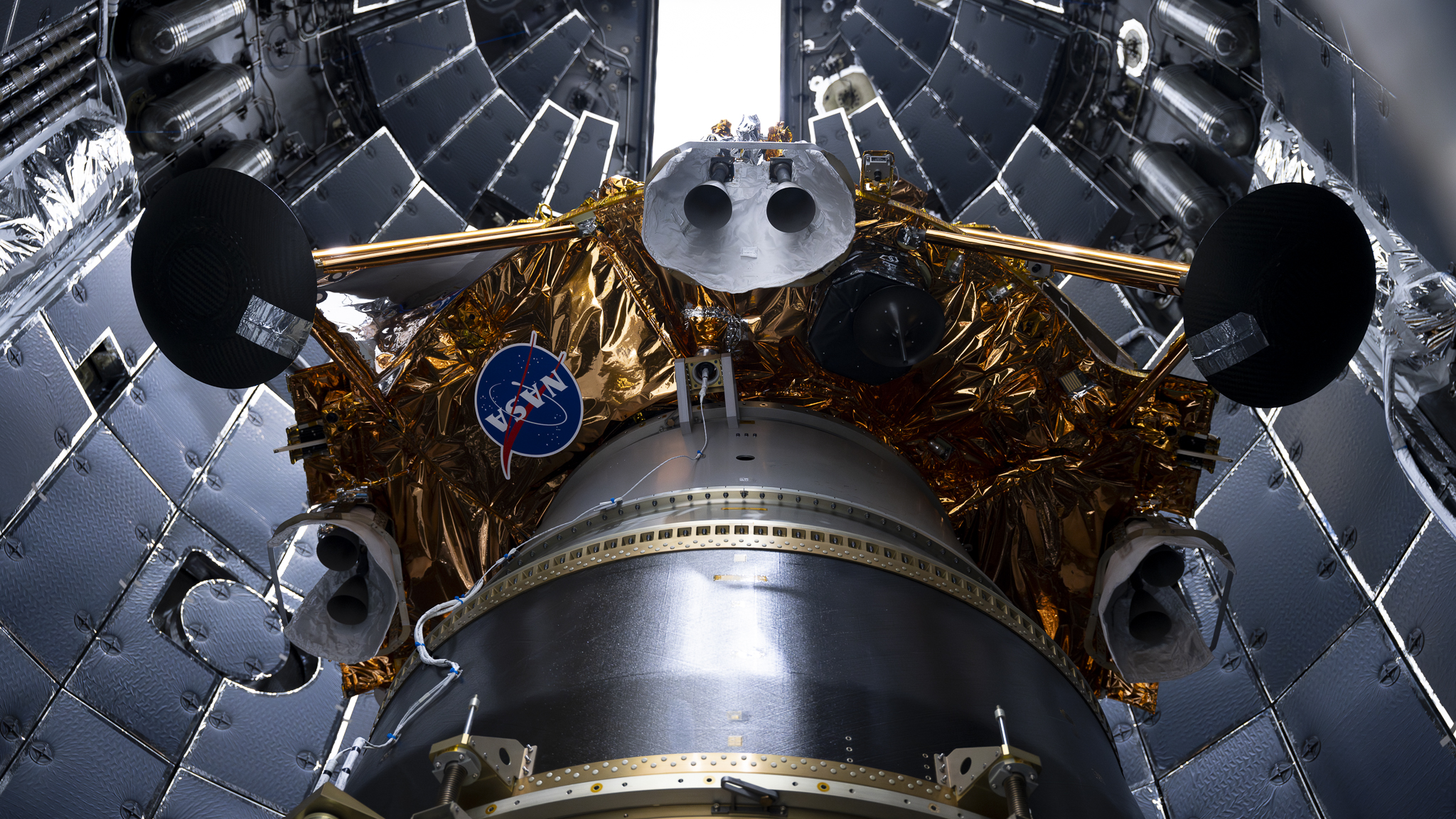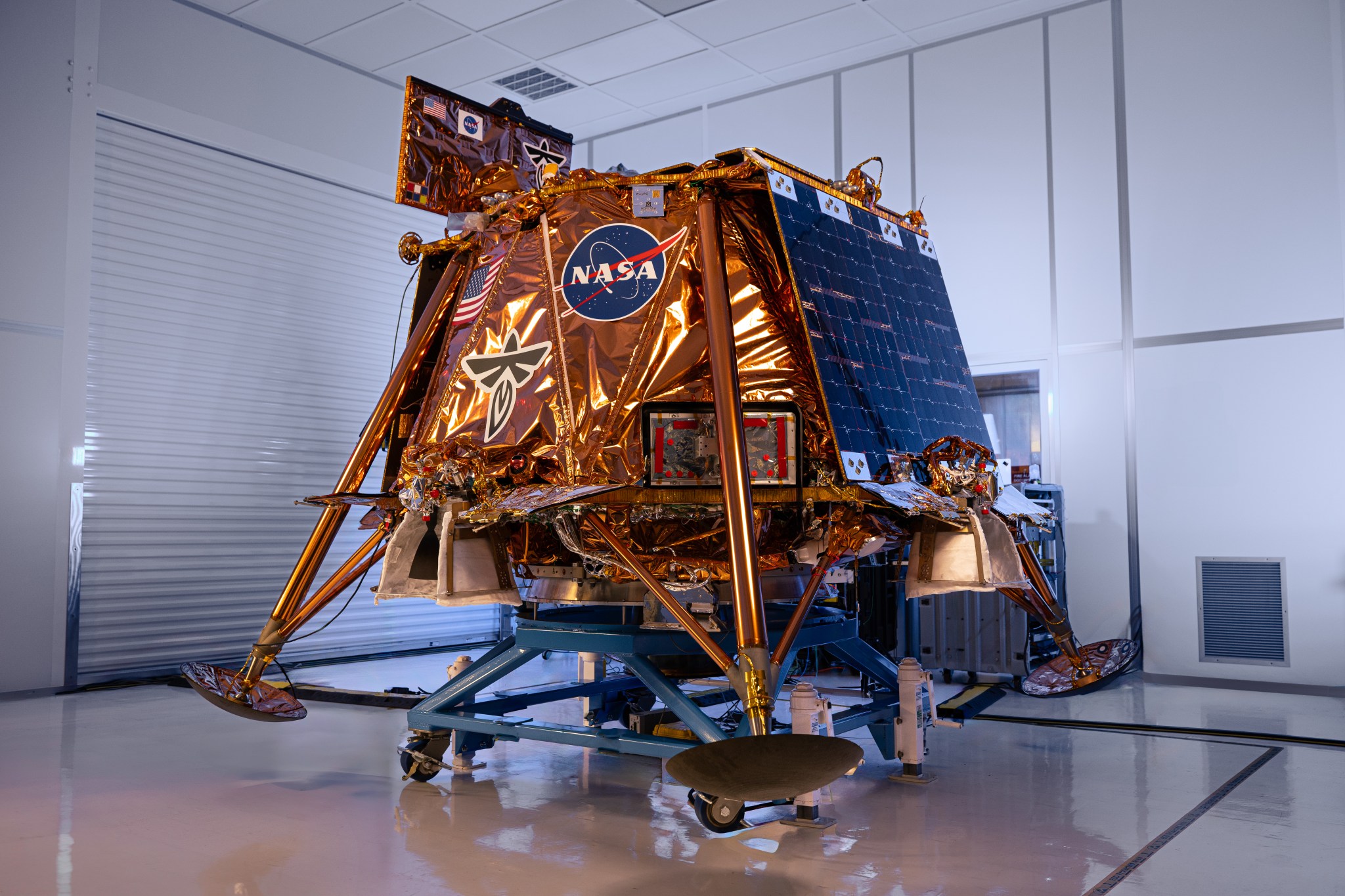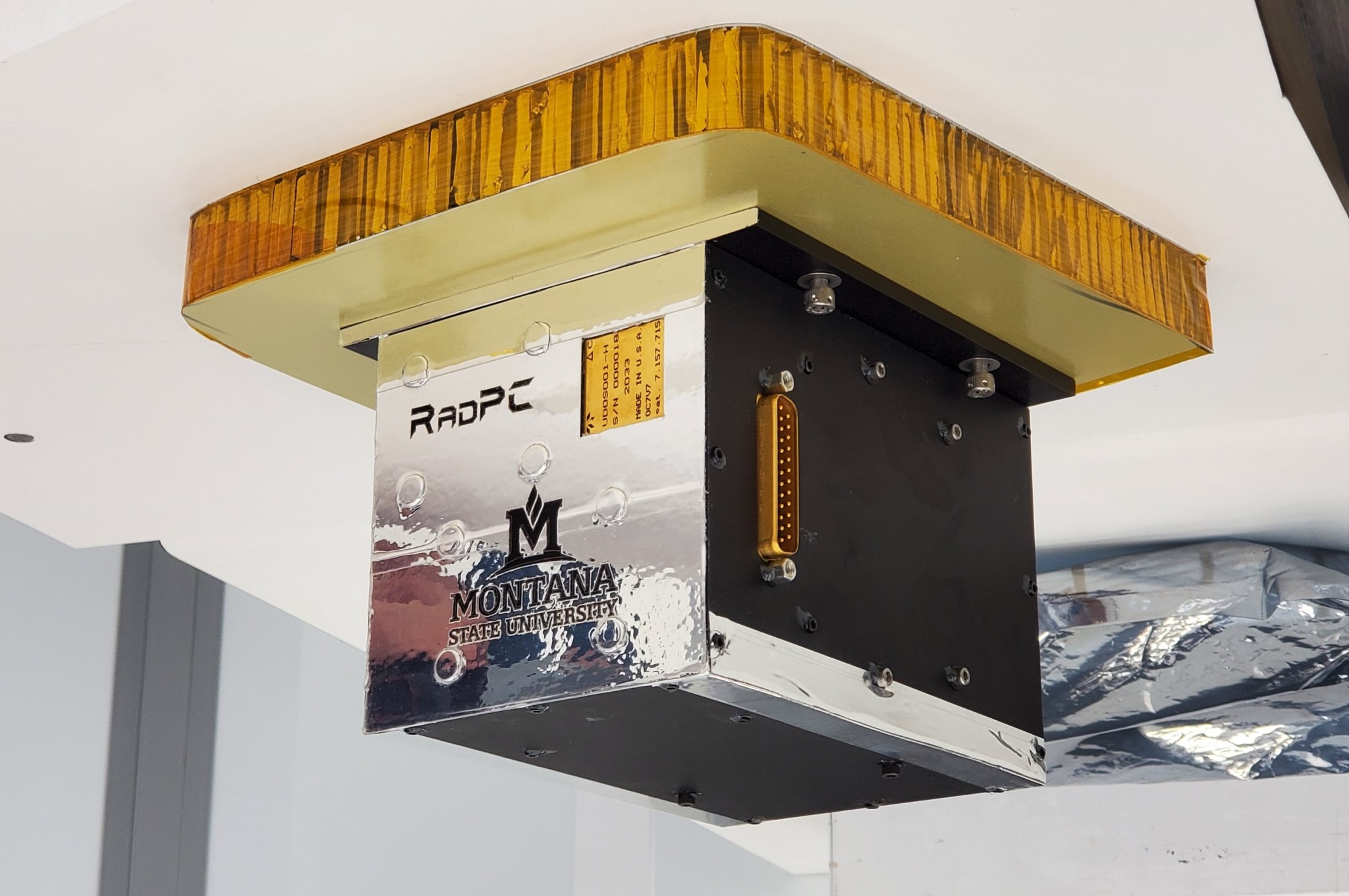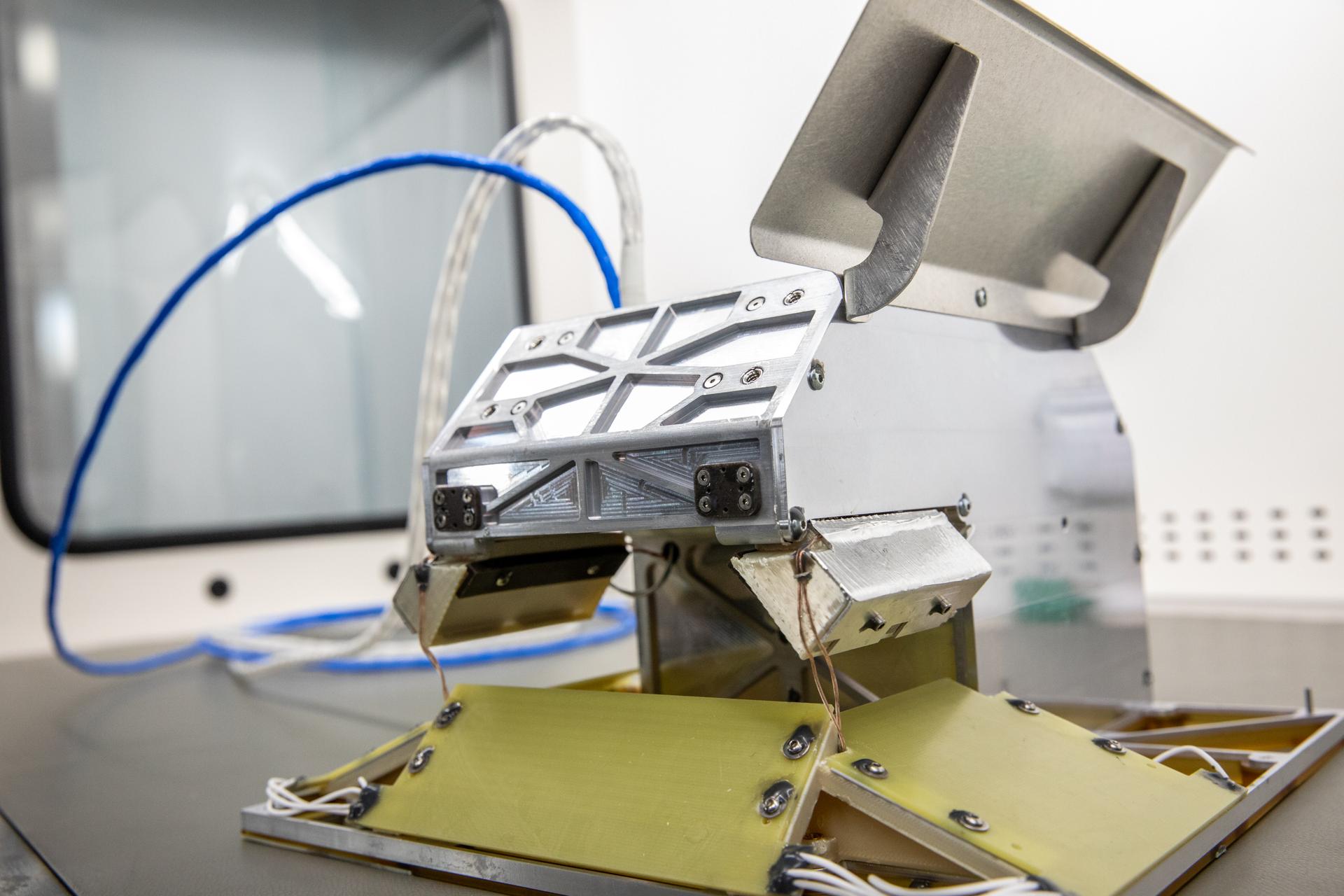6 min read Preparations for Next Moonwalk Simulations Underway (and Underwater) NASA’s Lunar Trailblazer approaches the Moon as it enters its science orbit in this artist’s concept. The small satellite will orbit about 60 miles (100 kilometers) above the lunar surface, producing the best-yet maps of water on the Moon. Lockheed Martin Space NASA’s Lunar Trailblazer spacecraft gets covered in anti-static wrap before being shipped from Lockheed Martin Space in Littleton, Colorado, to the agency’s Kennedy Space Center in Florida, where it arrived on Jan. 29. Lockheed Martin Space Before…
Read MoreTag: Commercial Lunar Payload Services (CLPS)
NASA’s Polar Ice Experiment Paves Way for Future Moon Missions
Artistic rendering of Intuitive Machines’ Nova-C lander on the surface of the Moon. Credit: Intuitive Machines NASA’s Polar Resources Ice Mining Experiment-1 (PRIME-1) is preparing to explore the Moon’s subsurface and analyze where lunar resources may reside. The experiment’s two key instruments will demonstrate our ability to extract and analyze lunar soil to better understand the lunar environment and subsurface resources, paving the way for sustainable human exploration under the agency’s Artemis campaign for the benefit of all. Its two instruments will work in tandem: The Regolith and Ice Drill…
Read MoreNASA to Talk Science, Tech Aboard Next Intuitive Machines Moon Flight
As part of NASA’s CLPS (Commercial Lunar Payload Services) initiative and Artemis campaign, Intuitive Machines’ second delivery to the Moon will carry NASA technology demonstrations and science investigations on their Nova-C class lunar lander. Credit: Intuitive Machines NASA will host a media teleconference at 1 p.m. EST Friday, Feb. 7, to discuss the agency’s science and technology flying aboard Intuitive Machines’ second flight to the Moon. The mission is part of NASA’s CLPS (Commercial Lunar Payload Services) initiative and Artemis campaign to establish a long-term lunar presence. Audio of the…
Read MoreNASA Invites Media to Second Intuitive Machines Launch to Moon
Caption: As part of NASA’s CLPS (Commercial Lunar Payload Services) initiative and Artemis campaign, Intuitive Machines’ second delivery to the Moon will carry NASA technology demonstrations and science investigations on their Nova-C class lunar lander. Credit: Intuitive Machines For the second time, Intuitive Machines will launch a lunar lander to deliver NASA technology demonstrations and science investigations to the Moon for the benefit of all. Media accreditation is open for the IM-2 launch, part of NASA’s CLPS (Commercial Lunar Payload Services) initiative and Artemis campaign to establish a long-term presence…
Read MoreNASA Space Tech’s Favorite Place to Travel in 2025: The Moon!
4 Min Read NASA Space Tech’s Favorite Place to Travel in 2025: The Moon! The first image from space of Firefly's Blue Ghost mission 1 lunar lander as it begins its 45-day transit period to the Moon. Credits: Firefly Aerospace NASA Space Technology has big travel plans for 2025, starting with a trip to the near side of the Moon! Among ten groundbreaking NASA science and technology demonstrations, two technologies are on a ride to survey lunar regolith – also known as “Moon dust” – to better understand surface interactions…
Read MoreTen NASA Science, Tech Instruments Flying to Moon on Firefly Lander
Firefly Aerospace’s Blue Ghost lander getting encapsulated in SpaceX’s rocket fairing ahead of the planned liftoff for 1:11 a.m. EST Jan. 15 from Launch Complex 39A at NASA’s Kennedy Space Center in Florida SpaceX As part of NASA’s CLPS (Commercial Lunar Payload Services) initiative and Artemis campaign, the agency is preparing to fly ten instruments aboard Firefly Aerospace’s first delivery to the Moon. These science payloads and technology demonstrations will help advance our understanding of the Moon and planetary processes, while paving the way for future crewed missions on the…
Read MoreNASA Sets Coverage for Firefly First Commercial Robotic Moon Launch
As part of NASA’s CLPS (Commercial Lunar Payload Services) initiative and Artemis campaign, Firefly Aerospace’s Blue Ghost Mission One lander will carry 10 NASA science and technology instruments to the Moon’s near side. Credit: Firefly Aerospace Carrying NASA science and technology to the Moon as part of the agency’s CLPS (Commercial Lunar Payload Services) initiative and Artemis campaign, Firefly Aerospace’s Blue Ghost Mission 1 is targeting launch Wednesday, Jan. 15. The mission will lift off on a SpaceX’s Falcon 9 rocket from Launch Complex 39A at the agency’s Kennedy Space…
Read MoreNASA to Test Solution for Radiation-Tolerant Computing in Space
3 min read Preparations for Next Moonwalk Simulations Underway (and Underwater) The Radiation Tolerant Computer, or RadPC, payload undergoes final checkout at Montana State University in Bozeman, which leads the payload project. RadPC is one of 10 NASA payloads set to fly aboard the next delivery for NASA’s CLPS (Commercial Lunar Payload Services) initiative in 2025. RadPC prototypes previously were tested aboard the International Space Station and Earth-orbiting satellites, but the technology demonstrator will undergo its biggest trial in transit to the Moon – passing through the Earth’s Van Allen…
Read MoreElectrodynamic Dust Shield Heading to Moon on Firefly Lander
Inside of the Electrostatics and Surface Physics Laboratory at NASA’s Kennedy Space Center in Florida, an electrodynamic dust shield (EDS) is in view on Jan. 18, 2023. The dust shield is one of the payloads that will fly aboard Firefly Aerospace’s Blue Ghost lunar lander as part of NASA’s Commercial Lunar Payload Services (CLPS) initiative. NASA/Cory Huston Defeating dust may be a small concern for most people on Earth, but for astronauts and spacecraft destined for the Moon or Mars, it is a significant hazard that must be mitigated. That’s…
Read MoreNASA Names Adam Schlesinger as Commercial Lunar Payload Services Project Manager
Official portrait of Adam Schlesinger. NASA/Bill Stafford NASA has selected Adam Schlesinger as manager for CLPS (Commercial Lunar Payload Services). Schlesinger previously served as the Gateway Program habitation and logistics outpost project lead engineer at Johnson Space Center. “I am honored and tremendously excited to take on this new role as NASA continues to enable a growing lunar economy while leveraging the entrepreneurial innovation of the commercial space industry,” Schlesinger said. Schlesinger brings more than 20 years’ experience to NASA human space flight programs. Prior to supporting Gateway, Mr. Schlesinger managed…
Read More